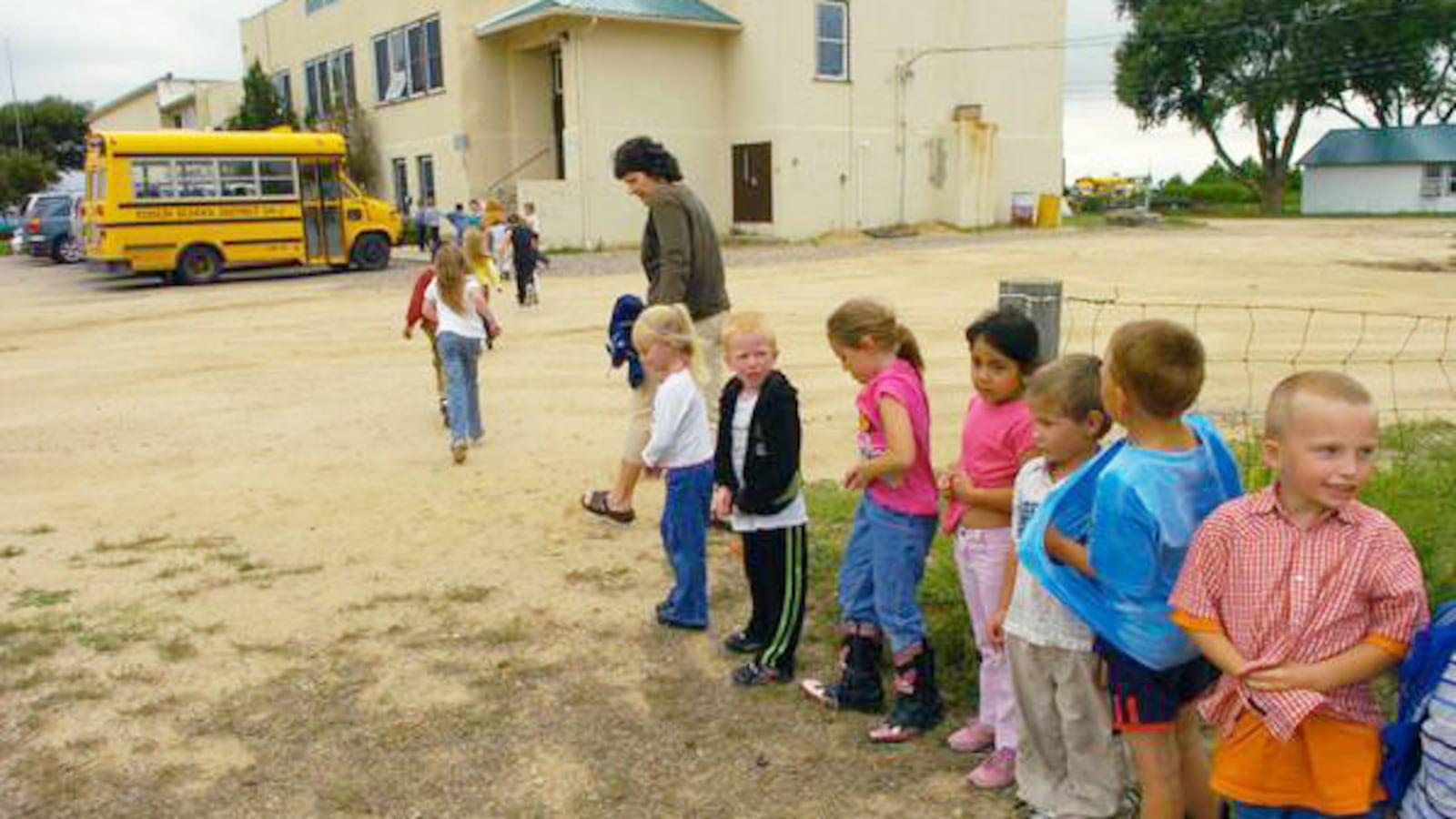The school year is in its second week and your small district is short a second-grade teacher. What’s a rural superintendent to do? Coax a Nebraska teacher out of retirement.
Bret Miles did exactly that one year when he was superintendent of the 594-student Holyoke school district in northeastern Colorado, about 35 miles south of the Nebraska line.
Despite growing anxiety about teacher preparation programs producing fewer graduates, most large Front Range districts still can pick and choose when they fill teaching jobs.
That’s not the case in many of Colorado’s 147 rural districts, 109 of which are specifically designated as small rural, with fewer than 1,000 students each. The state has 178 total districts.
The issue will be in the spotlight Wednesday at the Capitol when the Senate Education Committee considers a bill that proposes several steps to help rural districts, including stipends for student teachers.
The sponsor, Sen. Nancy Todd, admits that Senate Bill 16-1004 won’t fix the problem. But the Aurora Democrat and retired teacher hopes it’s a step in the right direction.
“I think it’s a moral obligation,” she said.. “If we’re shortchange the children in our rural areas, it will have fallout statewide.”
Many superintendents tell stories similar to Miles’. Superintendent Sharon Green said because of a dearth of applicants her 132-student Revere district went a full school year without a music teacher.
“It’s a crisis,” said Michelle Murphy, executive director of the Colorado Rural Schools Alliance.
Miles, now executive director of the Northeast Colorado Board of Cooperative Educational Services, said the longstanding challenge of finding teachers in math, science, special education and other specialties has grown more difficult.
The full scope of the rural teacher shortage is difficult to determine. No agency or advocacy group keeps statistics on how many teachers apply for rural jobs or how many positions go unfilled.
“We know we’re producing substantially fewer teachers than we were five years ago,” said Robert Mitchell, academic policy officer for educator preparation at the state Department of Higher Education “The first regions impacted by that are those districts in rural Colorado.”
Salaries, remoteness challenges for rural districts
Superintendents and state officials agree that the remoteness of many rural districts and relatively low salaries are key factors in the problem.
“It is my belief that there is one issue, and that issue is salary,” said Douglas Bissonette, superintendent of the 2,481-student Elizabeth school district.
Bissonette has studied teacher salaries and found that teachers in the largest, best-paying districts earn an average of about $58,000 year, compared to an average of $38,000 in the small, lowest-paying districts.
Miles added some teaching candidates turn down jobs because of a lack of jobs available for spouses.
To illustrate the salary problem, Merino Superintendent Rob Sanders often tells the story of a high school science teacher who quit in the middle of the school year for a job that paid twice as much. Her new post was at the state prison in Sterling.
What districts are doing
Rural districts welcome legislative interest in their plight but also are doing what they can to help themselves.
Some district cooperatives rural areas are preparing teachers in their own alternative programs. In some cases these BOCES are turning to aides and paraprofessionals already working in schools.The program in the Northeast BOCES trained 21 teachers last year.
Districts are casting a wide net. Miles is headed to Michigan later this year to recruit teachers for his 12 member districts. He’ll visit ive colleges in five days.
A few rural districts have hired teachers from outside the country.
A new grant-funded effort at Western State Colorado University in Gunnison is seeking to build connections between teacher prep programs and rural districts.
Most college and university education programs “really haven’t focused” on preparing rural teachers, the state’s Mitchell said.
Megan Quitter, rural education outreach coordinator for the Western State program, said she’s working to “establish a network of teacher prep programs and rural school districts, making sure students know about the benefits of rural teaching.”
What the bill proposes
Todd’s SB 16-104 proposes four initiatives:
- Create one or more rural education centers at colleges and universities, extending the work started at Western State, whose grant runs for only 18 months.
- Provide of stipends for prospective teachers who do their student teaching in rural districts.
- Establish a “teacher cadet” programs in rural districts to encourage middle and high school students to consider teaching as a career.
- Pay rural teachers who are pursuing National Board Certification or a master’s degrees necessary to teach concurrent enrollment classes.
Legislative staff haven’t prepared a cost estimate for the bill. But Capitol observers say the bill will need to cost less than $1 million for the bill to reach the governor’s desk in a tight budget year.
Todd’s modest bill is emblematic of the challenge Colorado lawmakers face when trying to respond to statewide education needs.
For instance, she noted, there’s no money available for bigger ideas like paying off student loans for teachers who move to rural districts.
“We’re not talking big, big money,” Todd said. “I’m very mindful of where our budget is.”
Lawmakers have taken some small steps for rural districts in recent sessions.
Last year the legislature approved an extra $10 million in per-student aid to such districts on top of the normal finance formula. A 2014 law gave rural districts some flexibility in meeting state paperwork requirements.

